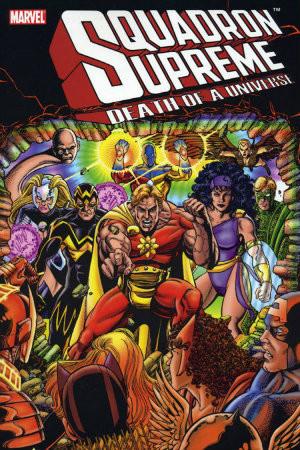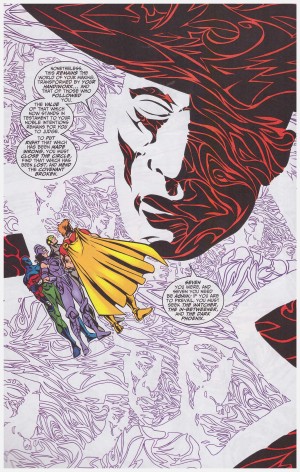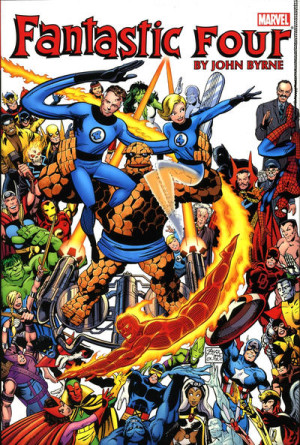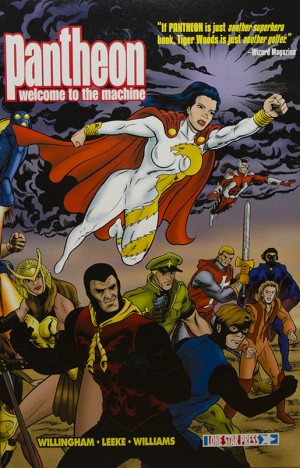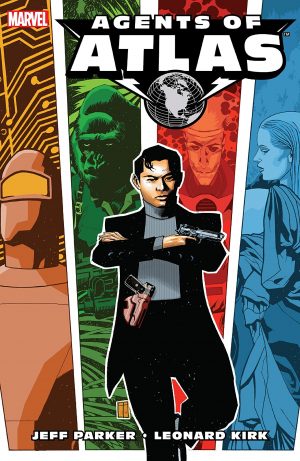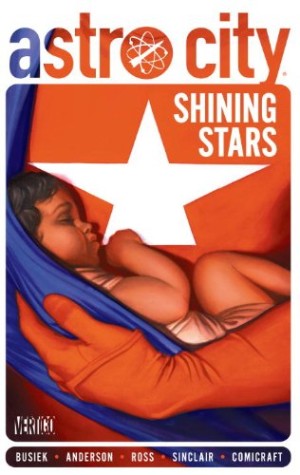Review by Frank Plowright
Although using the same title as the 1989 graphic novel, this is an expanded edition at standard paperback size adding several other stories.
In 2006 this was a welcome book. Death of a Universe had been out of print for years, and featured a cult cast with a following. Despite this, Mark Gruenwald’s work on the title story is very ordinary in comparison with what he achieved with his original Squadron Supreme graphic novel. The social experimentation and ethical questioning that characterised the first work is entirely absent, and we’re left with a standard 1980s superhero story drawn in standard 1980s fashion by Paul Ryan. A more in-depth review can be found here.
It’s Hyperion alone who pops up alongside Thor, in a whimsical story by Roy Thomas. It’s drawn by Wayne Boring, who drew hundreds of Superman stories back in the 1950s, so Thomas’ little in-joke is to construct a Superman and Lex Luthor set-to using Hyperion and his arch-enemy as stand-ins. The inking of Tom Palmer gives a polished gloss, but this isn’t memorable material, and is set before Gruenwald’s work.
The Squadron would next appear alongside the Avengers, and the bonus here is the best art in the collection from George Pérez, whose enthusiasm and willingness to pack his pages with detail while still being an accomplished storyteller shines through. The art’s not matched by the writing as Kurt Busiek has another run at a plot repeated all too often where the Squadron Supreme are concerned. They’re under someone else’s control and believe the Avengers to be imposters. Busiek’s polished enough, if you’ve not read the plot before and that this is the best of the collection speaks volumes for the quality of the remainder.
Busiek wraps up his tenure in the company of scripter Len Kaminski as the Avengers and Squadron Supreme battle again. It’s an improved plot this time, but artist Carlos Pacheco is either very rushed or not at all interested, as his pages generally look far better.
It’s left to Kaminski to close the book with ‘New World Order’ as the Squadron finally return to their home planet to discover much has changed. He prunes the Squadron’s roster, restoring them to the core membership, which is a joke tying them back to their origins as analogous to DC’s Justice League. Kaminski also includes a tribute to Gruenwald amid a story that has some spirit, but is eventually revealed as a complete reset job. Anthony Williams’ produces some fine individual pages (part of his cosmic sequence is the featured image), but as a whole the art is standard.
This incarnation of the Squadron Supreme was next seen in a later volume of Exiles. The entire content along with much more is now gathered in the Squadron Supreme Classic Omnibus. At the time of publication, Amazon listings of this collection were incorrectly accompanied by pictures of the 1989 cover.
